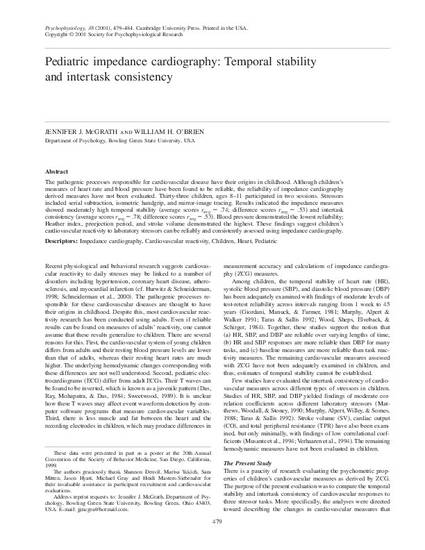
The pathogenic processes responsible for cardiovascular disease have their origins in childhood. Although children's measures of heart rate and blood pressure have been found to be reliable, the reliability of impedance cardiography derived measures have not been evaluated. Thirty-three children, ages 8-11 participated in two sessions. Stressors included serial subtraction, isometric handgrip, and mirror-image tracing. Results indicated the impedance measures showed moderately high temporal stability (average scores r(avg) = 74; difference scores r(avg) = .53) and intertask consistency (average scores r(avg) = .78; difference scores r(avg) = .53). Blood pressure demonstrated the lowest reliability; Heather index, preejection period, and stroke volume demonstrated the highest. These findings suggest children's cardiovascular reactivity to laboratory stressors can be reliably and consistently assessed using impedance cardiography.
Available at: http://works.bepress.com/william_obrien/1/
